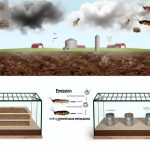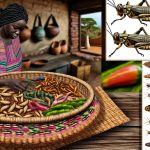The exact nutritional value of an insect type can vary depending on various factors, including exact species, its diet and the environment it lived in.
One analyze of caterpillars showed 9.7 grams or protein and 1.9 mg of iron per 100 grams. Another analyze of caterpillars showed 28.2 grams of protein and 35.5 mg of iron per 100 grams. Since the application of the word caterpillar is arbitrary and can be used to describe a wide range of larvae, including all larvae in the large order Lepidoptera, these differences are not surprising.
Two tests involving different grasshoppers came up with 20.6 grams or protein per 100 grams vs. 14.3 grams of protein per 100 grams. Other factors varied as well: 6.1 g fat / 3.3 g fat, 3.9 g carbohydrate / 2.2 g carbohydrate, 35.2 mg calcium / 27.5 mg calcium, and 5 mg iron / 3 mg iron. There are approximately 11,000 different recognized species of grasshopper, divided into 8 different superfamilies and roughly 2,400 genera.
| Insect | Protein (g) | Fat (g) | Carbohydrate (g) | Calcium (mg) | Iron (mg) |
| Cricket | 12.9 | 5.5 | 5.1 | 75.8 | 9.5 |
| Dung Beetle | 17.2 | 4.3 | .2 | 30.9 | 7.7 |
| Giant Water Beetle | 19.8 | 8.3 | 2.1 | 43.5 | 13.6 |
| June Beetle | 13.4 | 1.4 | 2.9 | 22.6 | 6.0 |
| Red Ant | 13.9 | 3.5 | 2.9 | 47.8 | 5.7 |
| Silk Worm Pupae | 9.6 | 5.6 | 2.3 | 41.7 | 1.8 |
| Termite | 14.2 | N/A | N/A | N/A | 35.5 |
| Weevil | 6.7 | N/A | N/A | N/A | 13.1 |
For comparison
| Insect | Protein (g) | Fat (g) | Carbohydrate (g) | Calcium (mg) | Iron (mg) |
| Lean Ground Beef | 27.4 | N/A | N/A | N/A | 3.5 |
| Broiled Cod | 28.5 | N/A | N/A | N/A | 1.0 |
Sources
The data in the table above comes from:
- The Food Insects Newsletter, July 1996, Vol. 9, No. 2, ed, by Florence V. Dunkel, Montana State University
- Bugs In the System, by May Berenbaum

